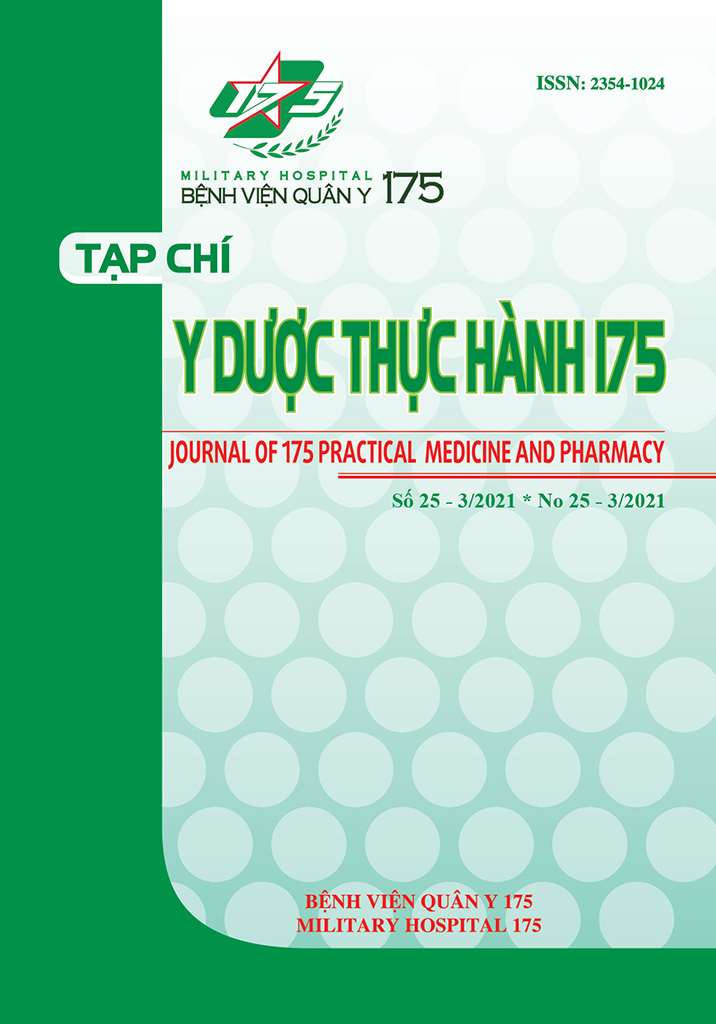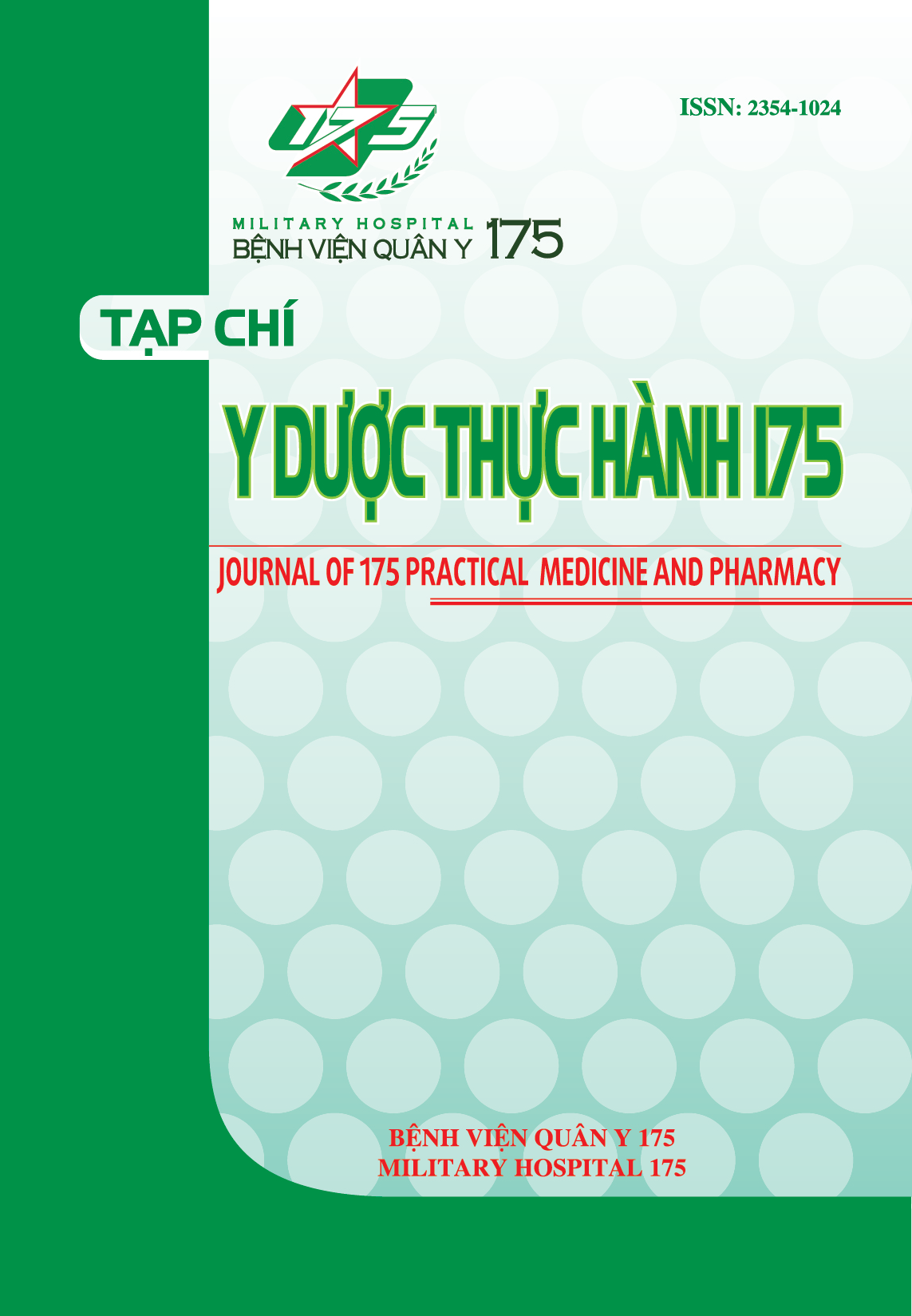FREQUENCY AND CHARACTERISTICS OF METABOLIC SYNDROME IN CADRES UNDER THE MANAGEMENT BY “X” PROVINCIAL PARTY COMMITTEE
Authors
Keywords:
Metabolic syndrome, waist circumference, IDF-2005References
Swarup S., Zeltser R. (2019), “Metabolic syndrome”, StatPearls Publishing LLC, 1-5.
Swarup S., Zeltser R. (2019), “Metabolic syndrome”, StatPearls Publishing LLC, 1-5.
Moore Justin X., Chaudhary N., Akinyemiju T. PhD1,2 (2017), “Metabolic Syndrome Prevalence by Race/Ethnicity and Sex in the United States, National Health and Nutrition Examination Survey, 1988–2012”, Preventing Chronic Disease, 14: E24.
Saklayen Mohammad G., (2018), “The Global Epidemic of the Metabolic Syndrome”, Current Hypertension Reports-Spinger, 20: 12.
Vliet-Ostaptchouk JVV., Nuotio ML., Slagter SN., et al (2014), “The prevalence of metabolic syndrome and metabolically healthy obesity in Europe: a collaborative analysis of ten large cohort studies”, BMC Endocrine Disorders 2014, 14:9.
Trương Thiện Niềm (2011), “Nghiên cứu tỷ lệ và đặc điểm hội chứng chuyển hóa theo tiêu chí IDF-2005 của cán bộ diện tỉnh ủy quản lý tại bạc liêu”, Luận văn Chuyên khoa cấp 2, Học viện Quân y.
Ngô Thanh Thúy (2009), “Nghiên cứu hội chứng chuyển hóa theo tiêu chí IDF – 2005 ở lực lượng công an thành Phố Hồ Chí Minh”, Luận văn Chuyên khoa cấp 2, Học viện Quân y.
Lê Văn Dương (2017), “Khảo sát đặc điểm hội chứng chuyển hóa và nồng độ acid uric máu ở cán bộ có độ tuổi từ 40 trở lên tại đơn vị x”, Luận văn Chuyên khoa cấp 2, Học viện Quân y.
Cua Sioksoan Chan (2012), “Prevalence of Metabolic Syndrome in Overweight and Obese Filipino Adolescents Based on the IDF Definition”, JAFES, 27, (1): 82-86.
Ghee Lim Kean, Kooi Cheah Wee (2016), “A Review of Metabolic Syndrome Research in Malaysia”, Med J Malaysia, 71, (1): 20-28.
Herningtyas EH., Ng Tian Sheng (2019), “Prevalence and distribution of metabolic syndrome and its components among provinces and ethnic groups in Indonesia”, Herningtyas and Ng BMC Public Health, 19: 377.
Kim Ji-Hyun, Ha JI., Park JM., et al (2018), “Association of High- Risk Drinking with Metabolic Syndrome and Its Components in Elderly Korean Men: The Korean National Health and Nutrition Examination Survey 2010- 2012”, Korean J Fam Med, 39: 233-238.
Võ Thị Dễ, Lê Thanh Liêm (2013), “Tần suất và đặc điểm hội chứng chuyển hoá trong cộng đồng tỉnh Long An năm 2010”, Y học thực hành, (856), Số 1: 13-17.
Raquel Villegas, Yong BX, Cai Q, et al (2009), “Prevanlence and determinants of Hyperuricemia in Middle- Aged, Urban chinese Men”, Metabolic syndrome and related disorders, 8(3/2010), 263-270.
Mujica Veronica, Leiva E., Icaza G., et al (2007), “Evaluation of metabolic syndrome in adults of Talca city, Chile”, Nutrition Journal, 7:14.
Ohta Yuko, Shi Takuya T., Arakawa K., et al (2007), “Prevalence and Lifestyle Characteristics of Hypertensive Patients with Metabolic Syndrome Followed at an Outpatient Clinic in Fukuoka, Japan”, Hypertens Res 2007; 30: 1077–1082.
Ford ES., Giles WH., Dietz WH. (2002), “Prevalence of themetabolic syndrome among US adults: findings from the thirdNational Health and Nutrition Examination Survey”, JAMA, 287, (3): 356–359.
Downloads
PDF Downloaded: 75










